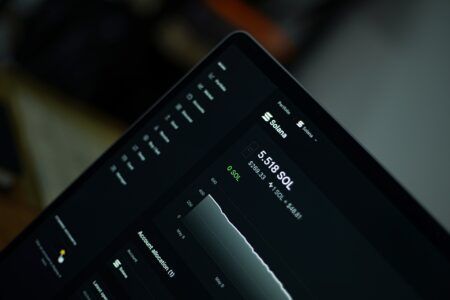Last week, Coinbase’s Lucy Jane Taylor, who deals with institutional sales, trading, and prime brokerage, talked about the various crypto investing and trading strategies employed by her firm’s clients.
Taylor’s comments were made at a very interesting panel (titled “Where Is Institutional AUM Going Next?”) moderated by James Harris, Commercial Director at leading digital asset market data provider CryptoCompare, at this year’s CryptoCompare Digital Asset Summit (CCDAS), which was held in London on March 30.
Taylor started by explaining what products and services Coinbase provides for institutions:
“So, taking a step back, we launched Coinbase Custody in 2018, and at that time, there were two standalone products. There was the custody cold storage and there was the exchange for trading. In autumn of last year, we launched Coinbase Prime, and that is an all-encompassing prime broker solution, and there’s four key pillars to the product.
“The first is multi-venue execution via a smart order router, and that means that institutional clients can contract with one counterparty and that’s Coinbase, but they get to access aggregated liquidity from a number of regulated exchanges and OTC desks.
“We can offer algos, and we’re acting on an agency basis. The second part is custody — so cold storage. We are a regulated custodian — regulated by the New York Department of Financial Services, and we can offer such services, such as staking directly out of custody, which is quite unique to the offering.
“The third part is trade finance. So, we’ve built solutions to help clients in terms of we can offer a post-trade line of credit. So, if you have your assets in the cold storage and you want to trade on those assets but actually you don’t want to move them back into your trading wallet, we can give clients a pre-agreed line of credit, and then they can just net-settle at the end of the day. We also can offer borrow-lend as well.
“And then the fourth part of the Prime offering is the data and analytics. We acquired a platform called Skew — that was in 2020… We’ve incorporated that into the Prime platform, and we can now offer clients charting and data on not only spot but also derivatives.“
And when Harris asked Taylor to share some stats to show how their institutional business has grown, Taylor said:
“As of full year 2021 and 31st of December 2021, we had 11,000 institutional clients. As mentioned, assets under custody for institutions is $137 billion, and that’s super interesting because the same number in full year 2020 was $45 billion.
“In terms of assets that we support on the platform, 170 assets for custody and 158 for trading. And in terms of trading volumes, I find this interesting an interesting stat: the full year of gross trading volume for 2020 was $120 billion dollars. And the same figure for the full year 2021 was $1.1 trillion.“
As for what Coinbase’s institutional clients are doing, Taylor had this to say:
“Coinbase exchange is direct access to low-latency liquidity from Coinbase. Now, that is mostly used by market makers, prop shops, etc, and they are normally using sort of market-neutral strategies. If we take a step outside of exchange and we look at Prime… I can go into more detail about client segments specifically.
“So, if we look at hedge funds, you know, global macro funds are typically trading the basis. We look at multi-strategy funds, who are taking directional positions, and we’re now starting to see systematic funds show interest as well.
“And then more broadly, if we look at family offices — and they’ve actually been quite into the crypto space for some time because their mandate is to obviously preserve the generational wealth — millennials are now starting to get involved with their family offices as well. So, typically they could be pro-crypto, and their strategy is more buy and hold.
“We also have introducing brokers on the platform. So, this could be challenger banks, private banks, regional banks, and they’re utilizing the infrastructure via maybe like a white-labeling solution. And then, finally, what’s also interesting is corporates. So, corporate treasuries are looking at NFTs, and also, you know, payroll services for example and yield-generating strategies, such as such as staking.“
The panel discussion starts at around the 2:30:30 mark of the above video and ends at the 3:09:20 mark.
Disclaimer
The views and opinions expressed by the author, or any people mentioned in this article, are for informational purposes only, and they do not constitute financial, investment, or other advice. Investing in or trading cryptoassets comes with a risk of financial loss.








